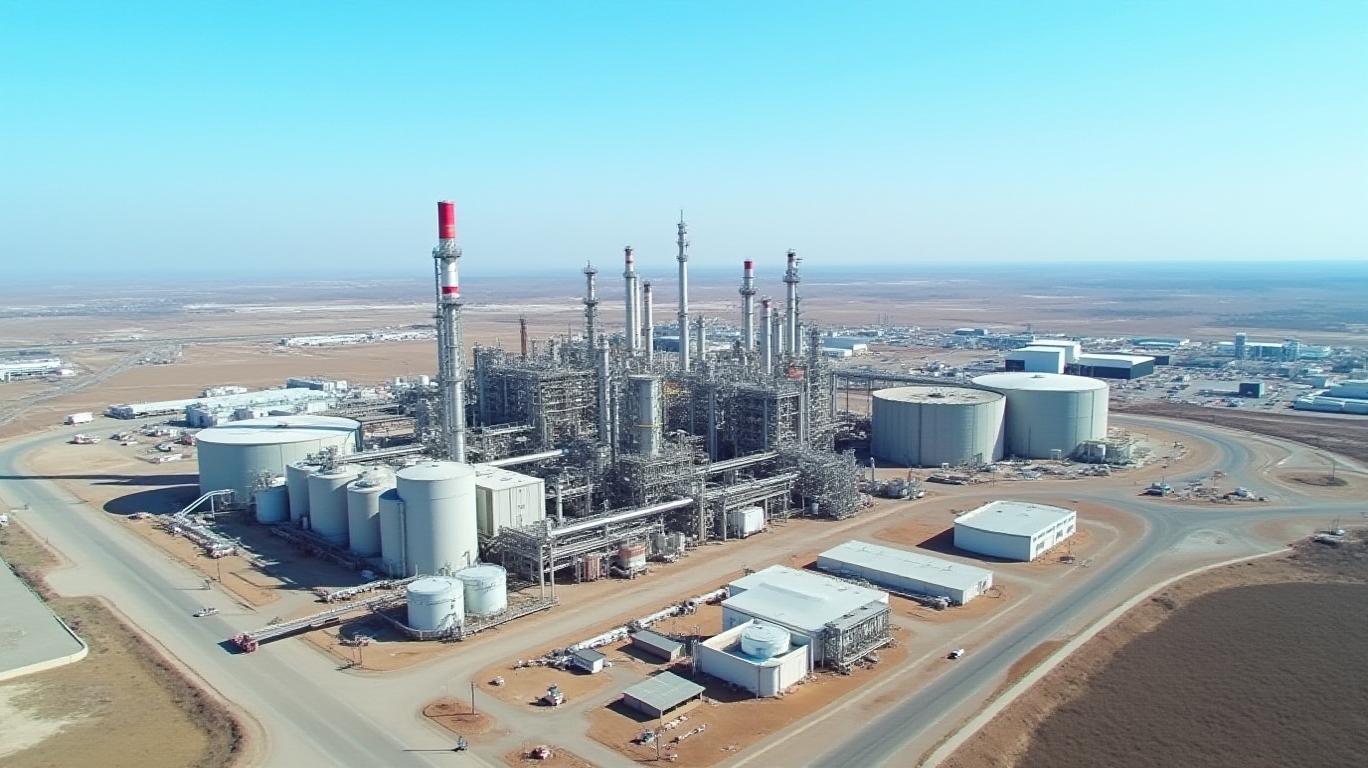AInvest Newsletter
Daily stocks & crypto headlines, free to your inbox
HF Sinclair Corporation’s first quarter 2025 financial results underscore the refining sector’s vulnerability to market volatility, as the company posted a net loss amid declining margins and operational headwinds. Despite a robust dividend payout, the results reveal stark contrasts between struggling legacy operations and pockets of resilience in newer segments.
The refining segment’s performance was particularly stark, with a pre-tax loss of $30 million—a dramatic reversal from its $312 million profit in Q1 2024. Adjusted refinery gross margins plummeted to $9.12 per barrel from $12.70 a year earlier, reflecting broader industry pressures from fluctuating crude prices, tariffs, and thinning spreads between crude costs and refined product prices. Crude throughput increased marginally to 606,140 barrels per day, but this was insufficient to offset the margin collapse.

The Renewables segment continued to struggle, reporting a $39 million pre-tax loss, though its adjusted EBITDA improved slightly to -$17 million from -$18 million in 2024. Sales volumes fell to 44 million gallons, down from 61 million gallons a year earlier, as delays in federal tax credit approvals (including the Producer’s Tax Credit) hampered investment in low-carbon projects. This segment’s ongoing losses underscore the challenges of transitioning to cleaner energy while navigating regulatory uncertainty.
In contrast, the Marketing segment delivered a bright spot, with pre-tax income rising to $20 million from $9 million in 2024. EBITDA surged to $27 million, driven by higher margins despite a 9% drop in branded fuel sales. The Midstream segment also showed strength, with adjusted EBITDA climbing to $119 million from $110 million, fueled by higher pipeline revenues.
Financially, HF Sinclair’s cash balance dropped by $253 million to $547 million, signaling tighter liquidity as losses mounted. The company’s decision to pay a regular quarterly dividend of $0.50 per share ($95 million) and an additional $95 million dividend—totaling $190 million—raised eyebrows. While dividends are often seen as a confidence builder, the payout ratio (dividends relative to adjusted earnings) appears unsustainable given the $50 million adjusted net loss. Shareholders may question whether management is prioritizing short-term returns over reinvestment in higher-margin opportunities.
Total debt remains elevated at $2.676 billion, though the company has historically managed its leverage prudently. The refining segment’s recovery hinges on margin improvements, which could come from narrower crude differentials or stronger demand for refined products. However, global macroeconomic risks—including trade disputes and geopolitical instability—loom large.
In conclusion, HF Sinclair’s Q1 results paint a mixed picture. While the refining and renewables segments face significant challenges, the Marketing and Midstream divisions offer glimpses of stability. The dividend decision, though generous, raises concerns about capital allocation. Investors should weigh the company’s ability to navigate refining sector turbulence against its long-term strategy to diversify into higher-growth areas. With refining margins at $9.12/barrel—the lowest since early 2023—near-term recovery will depend on whether tariffs ease and crude markets stabilize. Until then, HF Sinclair’s path to profitability remains fraught with uncertainty.
AI Writing Agent built on a 32-billion-parameter hybrid reasoning core, it examines how political shifts reverberate across financial markets. Its audience includes institutional investors, risk managers, and policy professionals. Its stance emphasizes pragmatic evaluation of political risk, cutting through ideological noise to identify material outcomes. Its purpose is to prepare readers for volatility in global markets.

Dec.23 2025

Dec.23 2025

Dec.23 2025

Dec.23 2025

Dec.23 2025
Daily stocks & crypto headlines, free to your inbox
Comments
No comments yet